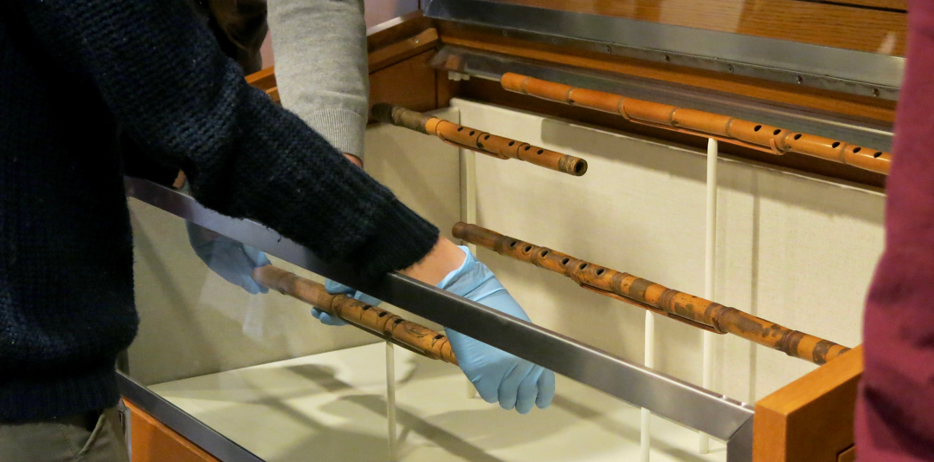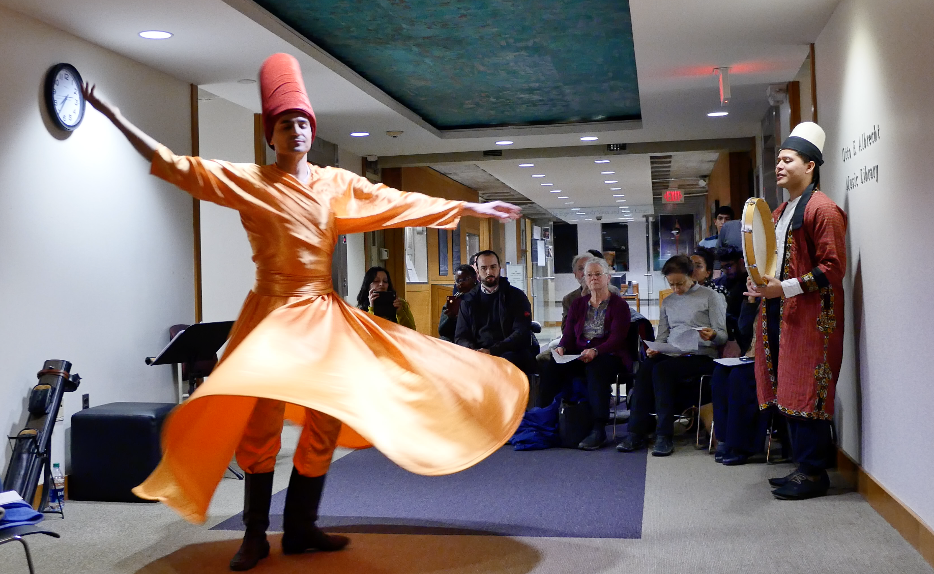Re-Covering the Ney Collection: An Online Exhibit

Although the Otto E. Albrecht Music Library might be physically closed, we still seek to support the University’s music students. One such student is Juan Castrillón, doctoral candidate in Ethnomusicology in the Department of Music, who curated the multi-modal Music Library exhibit, Re-Covering the Ney Collection. Originally installed in the Marian Anderson Gallery in February, the exhibit was made virtual once the Music Library closed in March. Castrillón’s work is still accessible to the wider Penn when the reaches international audiences and educates Penn virtually about a fascinating musical artifact.
The exhibit features four Turkish reed-flute instruments known as ney flutes, which were acquired by the Museum of the University of Pennsylvania at the end of the nineteenth century. These flutes are among the oldest existing artifacts of their kind, according to William Galpin in The Music of the Sumerians, Babylonians and Assyrians (1937).
“For over ten years I had been conducting research in Muslim mysticism, analytics of listening, and liturgical Sufi practices in contemporary Istanbul,” says Castrillón, an accomplished neyzen (ney flute player) himself. “But it wasn’t until 2018 that I was able to work with the instruments, thanks to a serendipitous request made by Dwaune Latimer, the Jean Friendly Keeper of the Museum’s African Collections, who wanted my informed opinion about the ney.”

One of the intentions of hosting the exhibit in and through the Music Library was to encourage undergraduate Library-goers to engage with graduate-level research. During the spring 2020 semester — before COVID-19 closed the library — Penn professors assigned their students to visit the physical exhibit for just that purpose.
Students in Glenda Goodman’s course on Popular Music “praised the exhibit for how informative it was, particularly given the small amount of space it takes up,” Goodman reported. “They also were interested in the idea that sacred music could be ‘popular,’ and were curious about the technical skill required to play the instrument.”
Students in World Musics and Cultures were given extra-credit assignments to explore the exhibit. One student interviewed Castrillón about his path to learning the ney and was fascinated by the key tenets of teacher-student relationships in devotional Islamic traditions.
In the virtual exhibit, photos of the rare Museum flutes are displayed alongside digital texts on the ney, classical sheet music from the Middle East, and audio resources available through the Penn Libraries. Castrillón’s curation is influenced by his ethnomusicological research on listening and Muslim mysticism, as well as his performance expertise on the instrument. The exhibit features a downloadable syllabus based on Castrillón’s research.
The virtual exhibit features a video recording of Re-Discovering the Ney, a recital offered in the Marian Anderson Gallery last December. Castrillón performed alongside Sufi dancer Ibrahim Miari, assistant professor at the Jewish Studies Program.

The exhibit also includes an interview with Liza Vick, Head of the Otto E. Albrecht Music Library and Eugene Ormandy Music & Media Center. Vick describes how the Music Library became involved in this multi-modal, collaborative effort to bridge Penn Libraries’ unique holdings with international research, community art, and online learning.
Visit Re-Covering the Ney Collection virtually here, and learn more about Castrillón’s scholarship in an article from the Pennsylvania Gazette here.
Special thanks to Liza Vick for her assistance with this post.
Date
July 9, 2020
